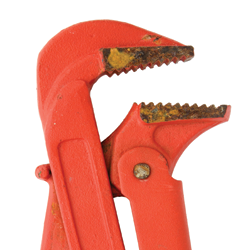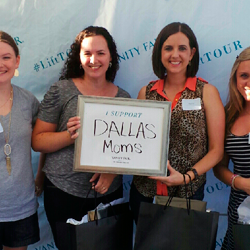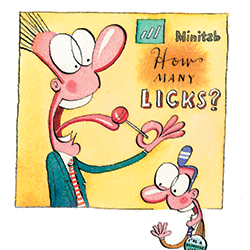|
REGISTRATION REQUIRED
case study
 PHOTOS: SILICON PUBLISHING INC.
Red-Hot Tabletop
Exhibiting novice Silicon Publishing Inc. leverages available resources and a clever traffic builder to help its tabletop exhibit surpass the company's pre-show goals. By Brian Dukerschein
When a company decides to jump into the trade show pool, the complications and questions related to such an endeavor immediately land it in the proverbial deep end. Everything from setting a budget and establishing objectives to determining whom to partner with can leave company management's collective head swimming. And what about the exhibit itself? Is it best to "go big or go home," or play it safe with a modest show-floor presence?
These were just some of the issues Silicon Publishing Inc. wrestled with when it turned to exhibiting as a means of realizing the company's ambitions. Founded in 2000, San Francisco-based SPI provides web-to-print and multichannel publishing solutions. One of its flagship products, Silicon Designer, allows a professional graphic designer to create a document template in Adobe InDesign that can then be accessed and customized – to an extent – through a web browser. For example, a designer at a real-estate company's corporate office can create a template for new home listings in InDesign that locks certain text and image fields but allows others to be edited. Multiple real-estate agents across the country can then access these templates on their personal computers or mobile devices; insert their own text, contact information, graphics, and photos; and deliver the document as a print-ready PDF. The result is improved workflow and brand consistency, as well as nearly perfect "what you see is what you get" accuracy, an industry term meaning that a document's appearance on a digital screen is largely indistinguishable from its final printed version. While SPI had already landed a number of big-name clients, including Nike Inc., Starbucks Corp., and The Walt Disney Co., the company brass wanted a level of name recognition that borders on ubiquity. "A new goal that was relayed to me when I was first brought on in late 2016 was that we wanted Silicon Designer to become so closely related to web-to-print that we would be like the Coke or Velcro brand of the industry," says Chris Jacobson, business development expert and strategic partnership liaison with SPI. "Whenever anyone thinks of online editing, we want them to think of Silicon Designer." And SPI was willing to bet that claiming some trade show territory would put the company on the path toward achieving that impressive goal. This was a road that SPI had tiptoed down only once before, with a tabletop exhibit at Graph Expo 2016. Jacobson admits that the company's pre-show planning was minimal, leading to a "show up and see what we get" mindset, but the results were promising enough to prompt him to search for future exhibiting opportunities. After looking over the marketing materials for Dscoop 2017, a trade show and conference for the print industry to be held in Phoenix, he felt this could be a prime chance to put Silicon Designer in front of a targeted audience of mid- to large-sized printers looking for web-to-print solutions. The fact that Dscoop also offered a first-time exhibitor program with sharply reduced fees made the decision to attend an easier one – despite limits on the exhibit's size and location. But to prove the value of establishing an exhibiting program, Jacobson knew he had to do something that had not been done for the company's show-floor debut at Graph Expo: come up with measurable objectives and a strategy for how to reach them. A Saucy Strategy Two of Jacobson's immediate priorities were to set the show goals and budget. Based on Dscoop's prospectus and conversations with its director of partner programs, Jacobson learned that 33 percent of the show's 2,000 attendees were the final decision-makers in their organizations, and another 49 percent had significant influence over buying decisions. He then estimated that roughly 10 percent of attendees could qualify as viable leads, and that SPI could reasonably aim to attract half of them to the exhibit. Of those 100 face-to-face interactions, Jacobson hoped that 50 would result in high-quality leads. After calculating the direct costs of the show and comparing them to SPI's pricing on a typical license for Silicon Designer, Jacobson knew that the company could recoup a favorable return on its investment if it added just a single new client. Nevertheless, Jacobson set what he felt was a realistic goal of three closed sales – and a budget of roughly $20,000. He then turned his attention to the booth itself. SPI's first-time exhibitor package meant the company was granted a mere 7-by-10-foot space with no back wall, a 2-by-6-foot table, and two chairs. Given these limitations, Jacobson tasked Greg Wasmuth, president of New York-based marketing agency CoCreators Group Inc. and a longtime SPI collaborator, with creating a tabletop design and theme that would hopefully prove irresistible to Dscoop attendees. After considering several marketing angles, Wasmuth arrived at an unexpected concept. "I kept thinking about how effective SPI is at making web-to-print publishing a success for its clients, but it's not really visible on the front end," Wasmuth says. "Instead, SPI is the secret sauce, and the secret sauce is what always gives something an edge." Knowing that SPI's exhibit would focus on presenting demonstrations of Silicon Designer in action, Wasmuth's pitch was for the company to market itself as "The Secret Sauce of Web-to-Print" and incentivize attendees to participate in the product demo by giving away full-sized bottles of condiments, such as barbecue, Thai peanut, and steak sauces. Some SPI executives were skeptical, but Jacobson was immediately on board. "I thought it was a fun and very engaging idea," Jacobson says. "After some further discussion, management gave us the green light to run with it."
Heating Things Up
Silicon Publishing Inc. used multiple tactics to drive attendees to its exhibit at Dscoop.  Staffers gave miniature bottles of Tabasco and call-to-action cards to passersby and attendees at networking events.
Staffers gave miniature bottles of Tabasco and call-to-action cards to passersby and attendees at networking events. Pre-show emails encouraged attendees to register for a product demonstration.
Pre-show emails encouraged attendees to register for a product demonstration.Staffers used the show app to promote SPI's hot-sauce giveaway. 
Fire and Spice SPI's exhibit plans were quickly taking shape, but one critical component was still missing: pre-show marketing. Dscoop management had contracted MindFire Internet Solutions Inc. for its own marketing initiatives, and the company was offering exhibitors its marketing-automation platform as an add-on package. That, coupled with Jacobson's familiarity with MindFire's leadership, made the decision to purchase a one-year license of the company's cloud-based Studio application a no brainer. Using templates created by MindFire and an attendee list provided by show management, Jacobson and his team created an email marketing campaign. Starting three weeks before the show, preregistered attendees received an email that announced the secret sauce campaign, extolled the benefits of Silicon Designer, and encouraged them to register for a 10-minute product demonstration. A link in the email directed recipients to a microsite where they could schedule their demo, choose their sauce, and be automatically entered in the drawing for the flatscreen TV. Once registered, attendees received a thank-you missive, while SPI's sales team was notified of the new lead for immediate follow-up. So with its plan in place and the number of demo appointments rising, SPI's team of four staffers headed to Phoenix to see just how much heat its hot-sauce strategy could generate. Building Steam Despite SPI's pint-sized footprint, it was difficult for attendees to overlook the company's tabletop exhibit. A corporate-yellow table throw, a fabric backdrop, and a banner with SPI's logo and secret-sauce tagline branded the space and drew the eye amid a sea of basic black stands. Flanking the display, which comprised little more than a 48-inch monitor (picked up from a local big-box retailer the day before the show), two short stacks of product literature, and a sampling station where attendees could dip tortilla chips in bowls of the three hot sauces, was a pair of pop-up banner stands originally used at Graph Expo. Whether attendees had a scheduled appointment or were simply strolling by, their experiences with SPI staffers were nearly identical. Prior to the show, Jacobson came up with a plan to pass out one-eighth-ounce bottles of Tabasco sauce and small cards introducing the secret sauce theme during qualifying conversations and at networking events. So as often as he could, Jacobson positioned himself near the aisle and initiated contact by presenting attendees with a miniature bottle of Tabasco and asking, "Did you get your free secret sauce?" This casual opener led to a brief qualifying conversation about the attendees' needs and pain points and how SPI may be able to address them. Interested passersby and attendees with prescheduled meetings were then handed off to another staffer who conducted a deeper discussion and led them through a 10-minute demo of Silicon Designer's capabilities. After gathering or confirming the prospects' contact information and establishing the desired course of follow-up, the staffer invited them to choose their bottle of hot sauce and informed them about the drawing for the flatscreen monitor – and the provision that they must be present in the exhibit to win. 
Budget Breakdown
When not in the booth, Jacobson was spreading word about SPI's exhibit any way he could. "I always had a stash of mini Tabasco bottles and our call-to-action cards in my coat pockets, and I handed them out at every opportunity I had while walking around the convention center," he says. "I treated them like they were my own business cards." And in addition to promoting the exhibit on Twitter, Jacobson also made full use of Dscoop's show app by posting promotional images and copy on its main feed and sending attendees nightly appointment reminders via its direct messaging function.Silicon Publishing Inc. was able to generate a fair amount of heat at Dscoop using a budget of roughly $20,000. Here is how the company allocated its spend. On the last day of the show, Jacobson used the MindFire Studio app to send a reminder text message to all attendees who were entered in the flatscreen drawing and had provided a mobile phone number. As showgoers assembled in SPI's booth at the appointed time, Jacobson asked them to write their names on a piece of paper. After a staffer drew the winning slip from an empty sauce box, the winner happily posed for a photo. Hot, Hot, Hot SPI's condiment-centric promotion may have been a gamble, but the company's outside-the-box thinking (and willingness to capitalize on the support offered by show management and MindFire) certainly added some heat to its burgeoning exhibiting program. Going into Dscoop, SPI hoped to capture at least 100 leads. But when the show closed, the face-to-face marketing newbie walked away with 112. What's more, post-show follow-ups determined that 56 of those leads were highly qualified, besting the original goal of 50. And while SPI's longer sales cycle delays any definitive metrics regarding sales closed, Jacobson strongly expects five new clients will sign on the dotted line as a result of their in-booth experiences, two more than he'd hoped for – and five times what he needed to recoup his investment. It just goes to show that when it comes to exhibiting at any scale or level of experience, the secret to success isn't in the sauce, but in the strategy. E
|
|
|
||||||||||||||||||||||||||||
|
|
||||||||||||||||||||||||||||
|
TOPICS Measurement & Budgeting Planning & Execution Marketing & Promotion Events & Venues Personal & Career Exhibits & Experiences International Exhibiting Resources for Rookies Research & Resources |
MAGAZINE Subscribe Today! Renew Subscription Update Address Digital Downloads Newsletters Advertise |
FIND IT Exhibit Producers Products & Services All Companies Get Listed |
EXHIBITORLIVE Sessions Exhibit Hall Exhibit at the Show Registration |
ETRAK Sessions Certification F.A.Q. Registration |
EDUCATION WEEK Overview Sessions Hotel Registration |
CERTIFICATION The Program Steps to Certification Faculty and Staff Enroll in CTSM Submit Quiz Answers My CTSM |
AWARDS Exhibit Design Awards Portable/Modular Awards Corporate Event Awards Centers of Excellence |
NEWS Associations/Press Awards Company News International New Products People Shows & Events Venues & Destinations EXHIBITOR News |
||||||||||||||||||||
|
||||||||||||||||||||||||||||






